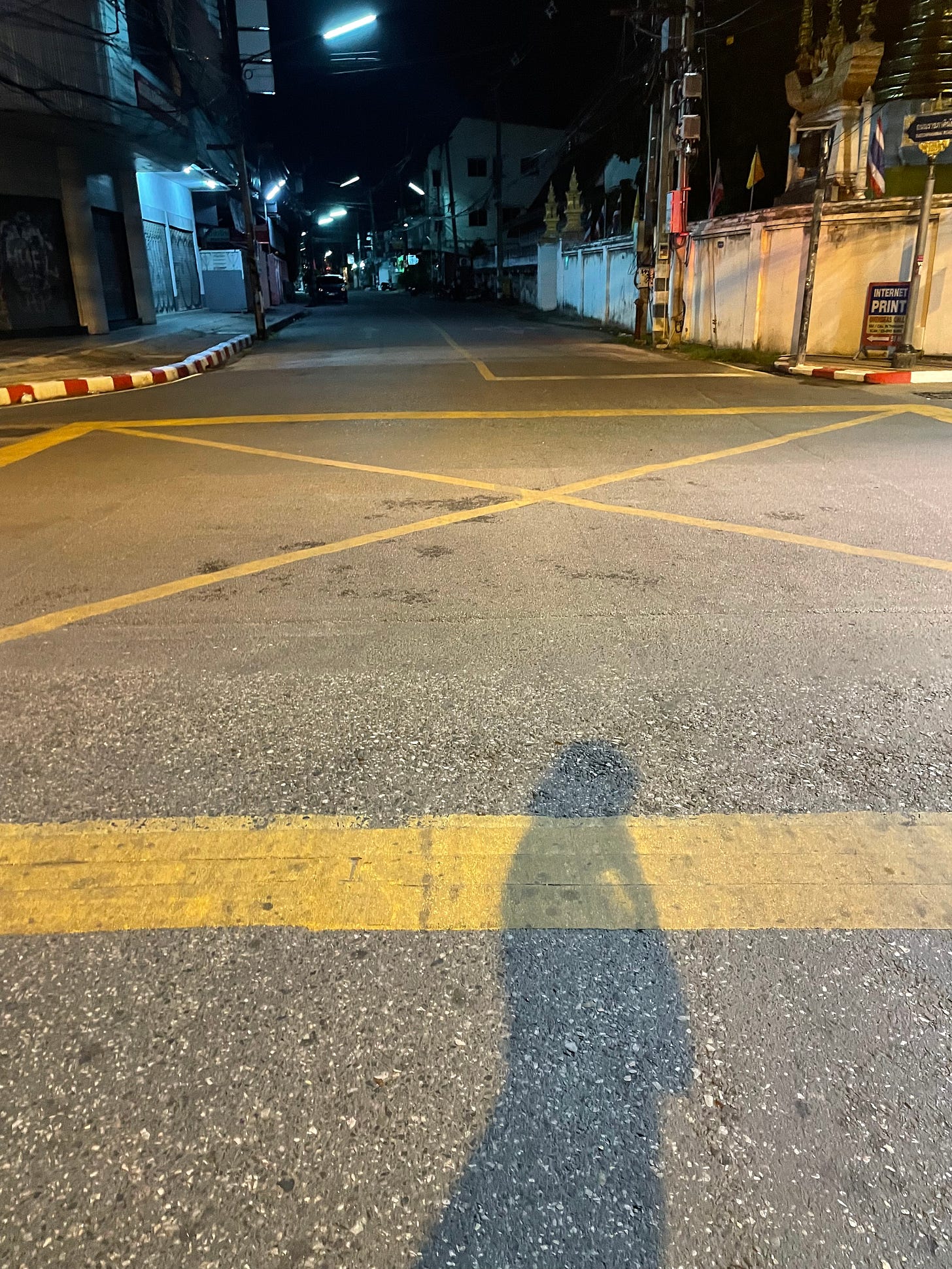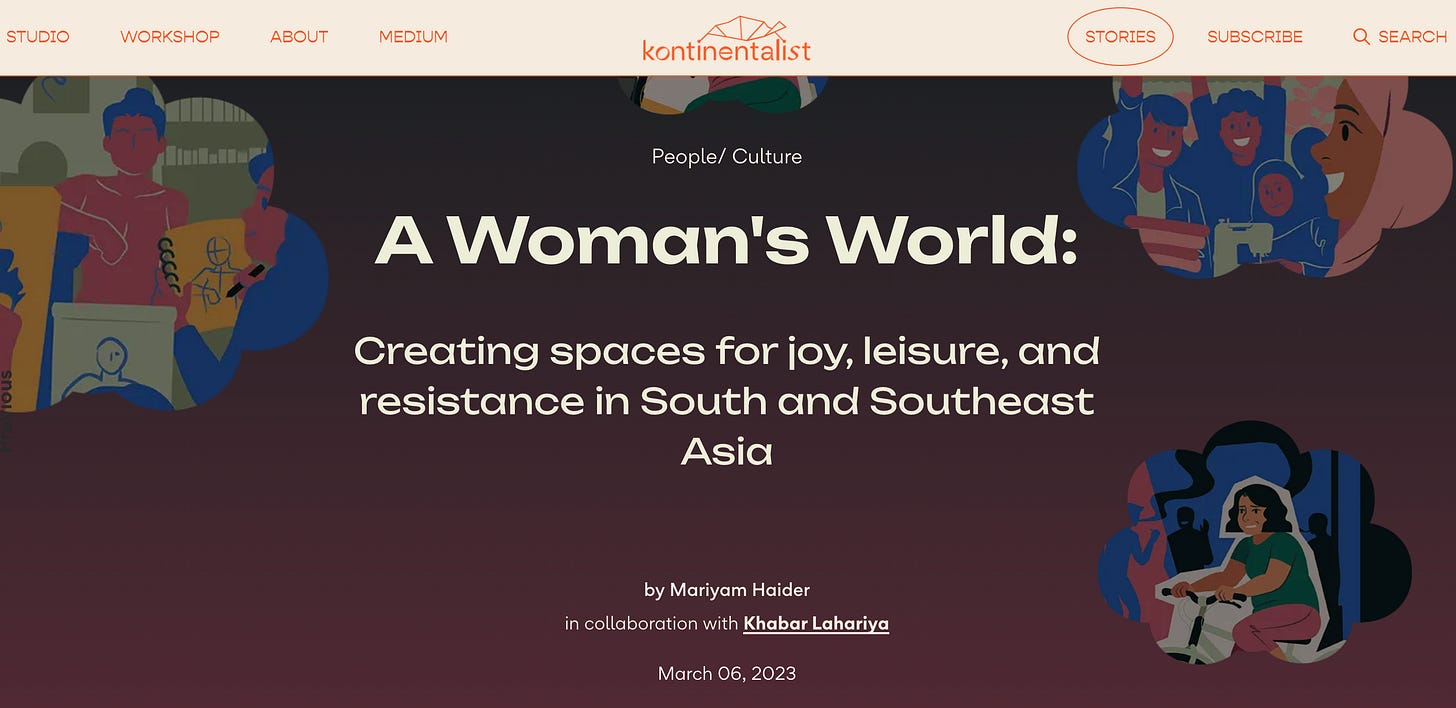Hello, I’m Mariyam, and welcome to my newsletter. My writings here are inspired by the world and the way it interacts with a woman, in public, private or official settings. By documenting my experiences, I intend to create more conversations and mindset-shifts that can enable our society to turn more equal, just and simply more joyous for all of us to thrive. Do subscribe to receive my latest piece and consider supporting it. ♥️
On a date one evening in New Delhi during the winter months of 2012, the guy I was with offered to accompany me to my metro destination. It was past 11 pm, and while metros are considered relatively safer, we both agreed that it would be better if he dropped me off. However, once we arrived at the platform, the guy realised that the last train that would take him towards his destination was arriving nearly 20 minutes sooner than mine.
He looked at me with concern and confusion (what with Delhi being one of the most unsafe cities for women in the world). I casually shrugged, and told him to take his metro home. It was nearly 11.30 pm, the metro station empty, and after a few minutes of discussion, I saw him clambering down the steps towards the other platform.
My train was supposed to arrive soon but the idea of being alone at the station turned my legs to jelly. Some of the worst fears and nightmares I’d had began creeping up on me, as I stood in the spot praying for the metro to arrive sooner.
Right at that moment, a few metres away, I saw a man walk up to the station, furthering my anxiety. A few seconds later, came a young woman, carrying a toddler in her arms. Seeing that woman brought an immediate sense of relief. I walked and stood next to her until the metro arrived.
The woman was clad in a saree, the loose end of which covered her head and half her face, and had a golden encrusting. Her feet were painted red and she held her baby tightly, who was making cooing noises, the only sound at that cold and empty platform.
I kept looking up at the clock as it showed the minutes until the train would arrive. When it finally did, all of us got into the nearly empty carriages. The man walked into the general coach, while the woman, her baby and I sat opposite each other in the women’s coach. Throughout the course of that ride, I thanked that woman in silence. We did not speak a single word. For those brief moments, she was my company and support.
“Urban planning that fails to account for women's risk of being sexually assaulted is a clear violation of women's equal right to public spaces...” - Caroline Criado Pérez, author of Invisible Women: Data Bias in a World Designed for Men
Over the years, as a way to overcome my own limited relationship with public spaces, I often walk through streets in new cities by myself. I sit on benches at nights, even for 10 minutes, simply to breathe the air and enjoy my solitude. To reassure myself that I belong there much like anyone else.
On a trip to Istanbul last year, I found myself searching for the right bus at a terminus station one evening. The yellow school-like buses with different numbers stopped one after the other and people bee-lined to get in. I climbed into the bus Google Maps indicated would take me where my hotel was, only to be disappointed. On listening to the name of the bus stop I had to get to, the driver shook his head indicating I was on the wrong bus.
I got off, back to the bus stop, waiting and thinking. At that moment, a middle-aged woman, turned to me with expressions that said, “Where are you headed?” I said “Ayvansaray.” She pointed a finger to the bus I’d originally gotten on and said “Ayvansaray!”. I tried conveying that the bus driver said otherwise. She looked at him and in a much louder voice said “Ayvansaray!!”. This time the driver turned to her, and as I walked towards him, he nodded and confirmed that I was indeed in the right bus.
Breathing a sigh of relief, I turned around, through the rain-drenched window, the woman and I exchanged smiles as the bus snailed through the traffic snarl.
When I’m alone at night in new places, one of my first instincts is to search for women, hoping that perhaps that woman also finds peace seeing a female stranger. These acts might sound small, but to me, they are an exercise in feeling at ease, when the public spaces are not designed for that.
While Singapore is considered to be one of the safest cities for women, with low rates of street crimes and reported harassment cases, I’ve witnessed this silent solidarity in moments of need.
A few months back, I had to go for a work meeting to Tuas. For those unfamiliar, Tuas is mainly a place for large containers and manufacturing facilities, and has limited connectivity via public transport. I booked a cab, and the driver turned out to be a woman. For the next 40-45 min, we mostly sat in silence, with small exchanges on work and life.
The facility we arrived at was empty except a solitary crow on the wall, a male security guard stationed in his guardhouse, two workers standing outside the guardhouse. The driver, made a slow turn into the area, and unable to find a drop off point said, “I’ll stay here while you find an entrance.” This minor gesture spoke volumes of her understanding of what it means to be a woman and alone in a desolate place.
Last year, I began working on a data journalism story for Kontinentalist in collaboration with Khabar Lahariya, on women’s labour to access leisure in public spaces. Titled ‘A Woman's World: Creating spaces for joy, leisure, and resistance in South and Southeast Asia’, the story reflects the collective experiences of women who navigate public spaces but rarely get the opportunity to be at leisure there.
From Pakistan to the Philippines, this essay recognises efforts by women to create safe spaces for themselves and offer solutions that can be adopted within families, communities and by state institutions. From availability of public benches, pedestrian paths and biking lanes, and accessibility-friendly parks, all inclusive community spaces and safer internet - Asian women shared their wish lists and how they are finding their freedoms and joys despite existing challenges.
What we saw unfold during the civil protests in Iran last year, shows Iranian women’s collective will to assert their freedoms, but also a loud and clear message, that they have each other’s backs.
Amid all these interactions, movements and experiences, I am filled with possibilities of hope and encouragement. I am held together by women, I might never meet or see again. Whose names I do not know, and might never exchange a word with each other. We might not even recognise each other if we meet on the streets again. And yet, we’ll acknowledge the challenges and offer safety, to one another. That to me, is the essence of silent female solidarity in public.
Mariyam Haider publishes poetry, non-fiction and personal essays on feminism, culture and society. Her writing has appeared in Scroll, Kontinentalist, Asian Review of Books, Centre for Feminist Foreign Policy, Livemint, Mekong Review, among others. You can follow her work on Instagram or LinkedIn.




